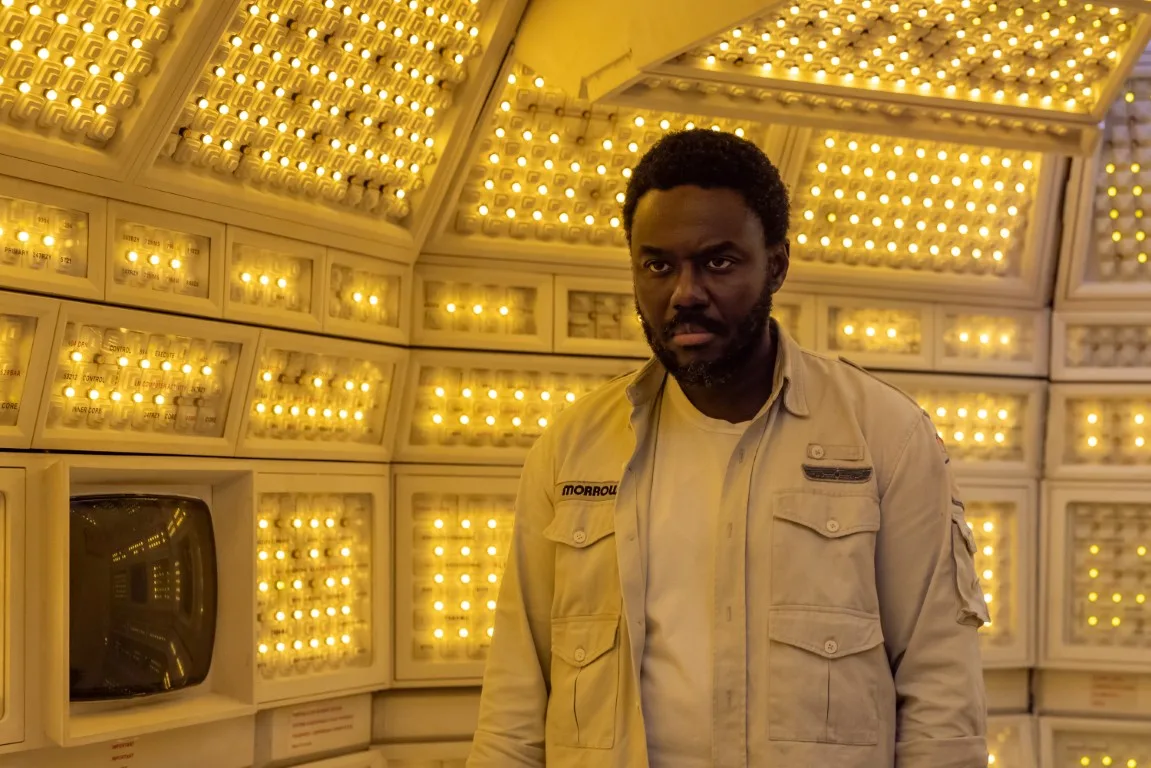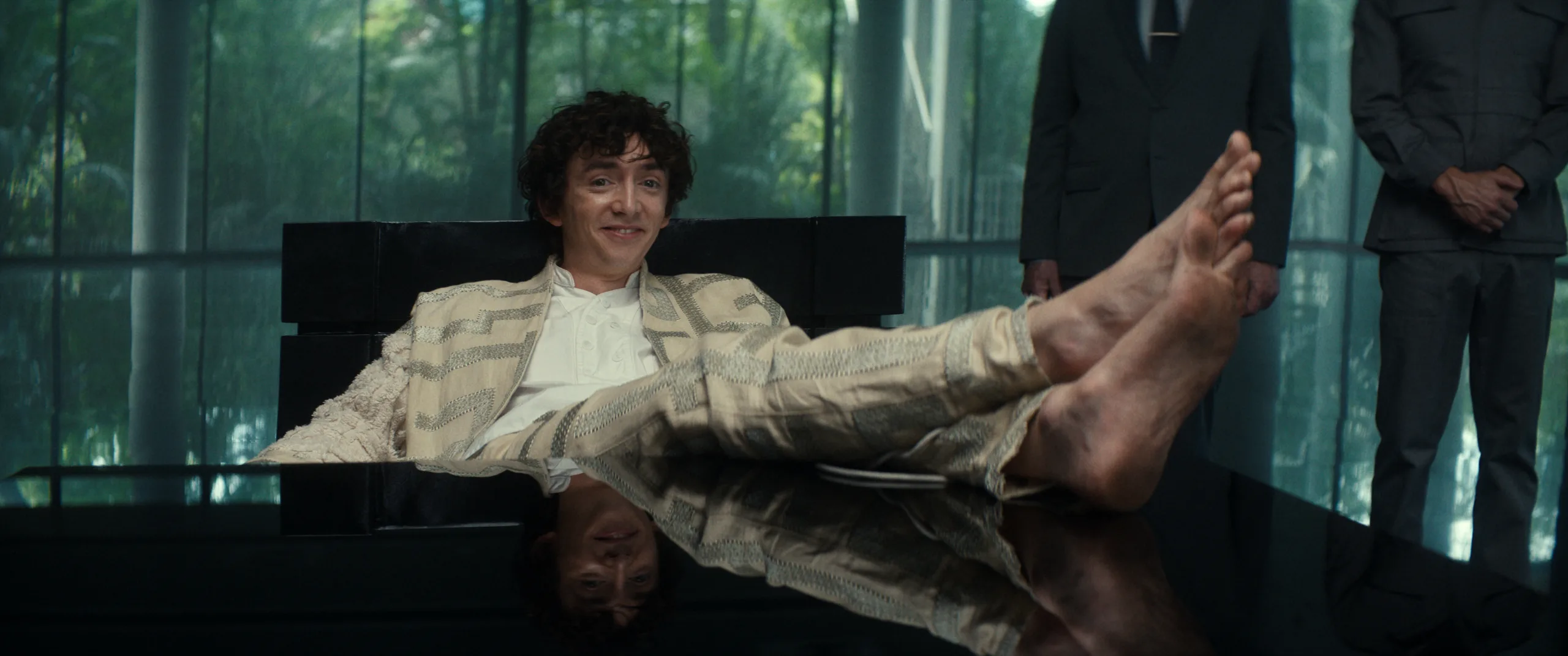Each episode of Noah Hawley’s brilliant “Alien: Earth” opens with what could be called an overture. As the title takes shape (much like the original, groundbreaking Ridley Scott film), images flash across the screen as a sort of twisted “Previously On.” But they also sometimes contain new data, much like a composer integrating previous themes while also previewing what’s to come. Set to an atonal, unsettling score, these overtures are designed to get your attention. Put the phone down. Settle in for something that’s not what you’re used to watching on TV or streaming services. Something that feels a bit alien.
Hawley, the creator of “Fargo” and “Legion,” has done what only a few creators before have been capable of doing: expanding on a well-known property in a way that makes it feel new again while also not betraying what fans already know and love. Tony Gilroy’s work on “Andor” feels like a logical comparison, and that’s the quality tier on which this show resides as well. Working with a razor-sharp team of writers and craftspeople, Hawley delivers an 8-episode first season that somehow marries the philosophical depth that fans of “Prometheus” admired with the intense action and bone-chilling imagery of James Cameron’s “Aliens.” He takes the essence of three art forms—the film world of one of the biggest sci-fi franchises of all time, the structure of episodic television, and even the literary foundation of, believe it or not, Peter Pan—and makes something that feels like nothing else on television. This is a show that takes such massive swings that the first few hours are almost disorienting. But once you get on its wavelength, you won’t want it to end.
The Peter Pan connection comes in the form of a young girl named Marci, who agrees to be a part of a breakthrough program in which a human’s consciousness can be put in a synthetic lifeform. Before she dies of cancer, she is “transferred” into the form of Wendy (Sydney Chandler), joined by a group of other kids given the same treatment, each named after members of the Lost Boys from the J.M. Barrie classic. After all, these kids will truly never grow up.
The hybrids include Slightly (Adarsh Gourav), Tootles (Kit Young), Smee (Jonathan Ajayi), Curly (Erana James), and Nibs (Lily Newmark), most of them given great arcs in the first season (especially Nibs). However, the CEO of the corporation in charge of the program has a favorite, a smirking tech bro named Boy Kavalier (Samuel Blenkin). His right-hand man is a synthetic named Kirsh (Timothy Olyphant), while the kind Dame Silvia (Essie Davis) and her husband Arthur (David Rysdahl) help manage the technical and emotional difficulties of the project.
Into this technological breakthrough drops aliens. Literally. The season opens with scenes that feel very much of a piece with Scott’s original, depicting what feel like working-class space travelers on a ship in deep space as they emerge from hyper-sleep. Hawley disposes of them mostly off-screen (until mid-season, when he circles back and delivers what is basically a standalone short “Alien” movie that stands among the best single episodes of TV in years). Still, we learn that the ship is on a trajectory to crash into Earth when a cyborg named Morrow (Babou Ceesay) locks himself in a safe compartment just before impact. He survives the collision, as does his cargo, including aliens familiar and new. Before you know it, soldiers are investigating the crash scene, including Hermit (Alex Lawther), the brother of, you guessed it, Marci/Wendy. Sensing a way for his company to one-up the competition in Weyland-Yutani, Boy Kavalier sends his Lost Boys in to retrieve the cargo themselves. And that’s just the first two hours. You’ll have no way to predict where the next six go. Trust me.

“Alien: Earth” alternates the deeply philosophical undercurrents one would expect from Hawley with intense action and gore that may not be seen coming. Let’s just say that you’ll get more actual Xenomorph action in these eight hours than the last several movies combined, alleviating any concern that a TV version of a massive franchise would feel small by comparison. Hawley uses limited sets—don’t expect the “Earth” to mean a lot of aliens wandering through a crowded mall—to significant effect, delivering a show that somehow feels both claustrophobic and sprawling at the same time. He introduces new alien lifeforms, including an unforgettable little monster that treats the eye like John Hurt’s stomach. Still, he never loses sight of the human and human variations at the center of his story. He’s constantly taking risks in terms of visual language, whether it’s double exposure, split diopter, canted angles, pacing shifts, or other tricks to amplify tension. It’s a show that’s consistently off-center in a manner that increases atmosphere, blending Hawley’s weird sense of humor with some of the most gnarly sci-fi imagery TV has ever seen.
Importantly, Hawley doesn’t let the creatures steal the show. There are standout performances all over “Alien: Earth,” but standouts include Chandler’s ascension from naïve girl to Ripley-esque heroine, Ceesay’s drive to complete his mission at any cost, and, most of all, Blenkin’s ability to make his pajama-wearing tech jerk into someone who’s somehow both captivating and chilling at the same time. Most of all, it’s an ensemble that all seems to be invigorated by the production around them, diving into the deep ends and trusting Hawley won’t let them drown.

“Alien: Earth” is “about” too many things to recap in a review, but the heart of the show to this viewer is something that the series has been exploring for a half-century: What happens when human beings are no longer the top of the predatory food chain? And, in subsequent films as well as here, what does it mean to be something in between human and alien? Wendy is not flesh and blood nor a robot; not a child or an adult. She’s nothing and everything at the same time.
The “Alien” films have also long explored the logical extremes of evolution and how technology can distort it, prioritizing corporate interests over human ones. Making the heroes of this tale children in grown-up bodies amplifies many of the franchise’s themes, making the adults around them feel even more predatory, as soldiers of the business world who are willing to sell out the next generation to further their own interests. Hawley twists and turns his captivating tale in a manner designed to make you question who the real enemy is in this story, and who it’s been all along. Maybe the monsters are already here.
Whole series screened for review. Starts on FX on August 12th.
